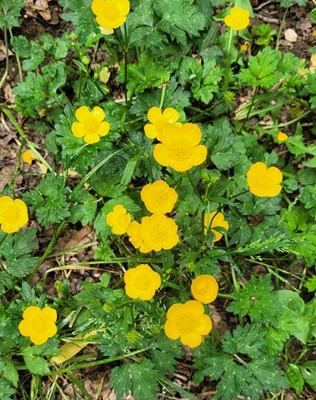Flower Properties
| Property | Value |
|---|---|
| English Name | Creeping Buttercup |
| MainColor | Yellow |
| PlantType | |
| Growth Type | |
| Season | May |
| ImageUrl | Ranunculus-001 |
| Photographer | DP |
| Location | |
| Human Toxicity |
Flower Details
Description
Creeping buttercup is a low-growing perennial with bright yellow, glossy flowers and spreading runners that root at the nodes. Its leaves are divided into three lobes, often with pale blotches. It’s common in damp grassland and can spread quickly in gardens.
Distribution
Native to Europe, including the UK, and widely naturalised elsewhere. Found in meadows, lawns, ditches, and riverbanks — especially in moist soils.
Medicinal/Other Uses
Historically, buttercups were sometimes used externally to produce blisters as a counter-irritant in folk medicine. Due to their toxicity, they are not used in modern herbal practice.
Edibility
Not edible — the plant contains compounds that can irritate the mouth and digestive tract if eaten raw.
Human Toxicity

Contains protoanemonin, which can cause skin blistering and stomach upset. The toxin is neutralised by drying, so hay containing buttercups is generally safe for livestock, but fresh plants can be harmful.
Pet Toxicity

Toxic to pets (causes drooling, vomiting, blistering of mouth)
Active Compounds
Protoanemonin (toxic when fresh), which converts to non-toxic anemonin when dried, plus flavonoids and saponins.
